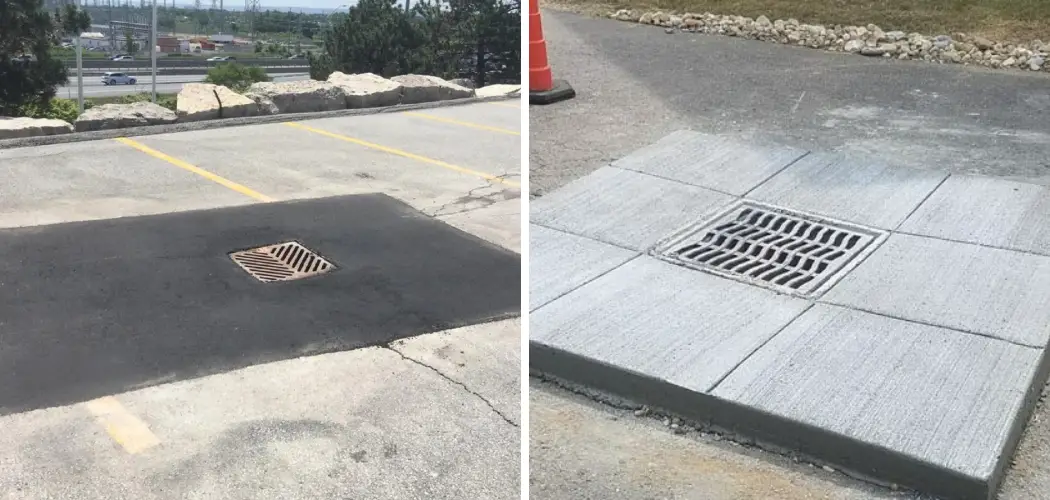Catch basins are an important part of any stormwater management system. They are designed to collect excess water and prevent flooding in streets, parking lots, and other areas. However, over time, these catch basins can become damaged or clogged, which can lead to reduced efficiency and potential damage to surrounding infrastructure.
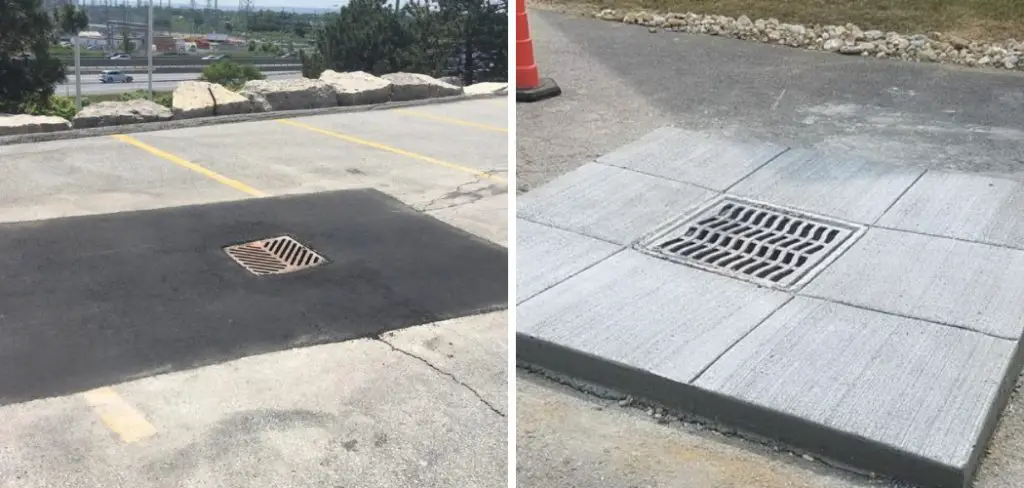
If you have noticed that your catch basin is not functioning properly, it is important to address the issue as soon as possible. In this guide, we will discuss how to repair a catch basin and ensure that it continues to function effectively.
Necessary Items
Before you begin the repair process, it is important to gather all necessary items and tools. Some of the most common items you will need include:
- Safety gear such as gloves, goggles, and a face mask
- A shovel or other digging tool
- A high-pressure hose or pressure washer
- Gravel or crushed stone
- Sand or concrete mix (if needed for repairs)
- A catch basin insert (if needed for replacement)
8 Things to Know Before You Start
1) Identifying the Problem
The first step in repairing a catch basin is identifying what the problem is. Some common issues with catch basins include clogs caused by debris or sediment build-up, damaged walls or grates, and cracked or collapsed structures. By determining the specific issue, you can better plan for the necessary repairs.
2) Prioritizing Safety
Repairing a catch basin can be a messy and potentially hazardous job. It is important to always prioritize safety by wearing appropriate gear such as gloves, goggles, and a face mask. Additionally, make sure to follow any necessary safety protocols, especially if working near traffic.
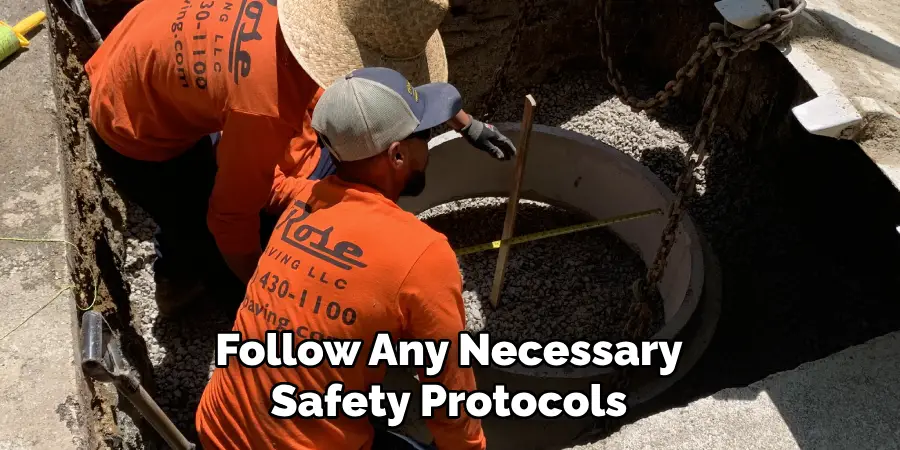
3) Checking for Underground Utilities
Before digging or making any repairs, it is crucial to check for underground utilities such as gas lines, electrical wires, and water pipes. These can be easily damaged during the repair process and may require specialized professionals to fix. You can contact your local utility company to mark any underground lines before beginning work.
4) Choosing the Right Materials
When repairing a catch basin, it is important to choose the right materials for the job. For example, if your catch basin has a damaged wall or grate, you may need to use concrete mix to make repairs. If there is excess debris or sediment build-up, using a high-pressure hose or pressure washer can effectively clear it out.
5) Removing Debris and Sediment
Before making any repairs, you will need to remove any debris and sediment from the catch basin. This can be done by using a shovel or other digging tool to scoop out the excess material. You may also use a high-pressure hose or pressure washer to blast away stubborn build-up.
6) Repairing or Replacing the Structure
Once the catch basin is cleared of debris, you can begin making repairs. If there is damage to the structure walls or grate, use the concrete mix to patch it up. For more severe damage, it may be necessary to completely replace the catch basin insert with a new one.
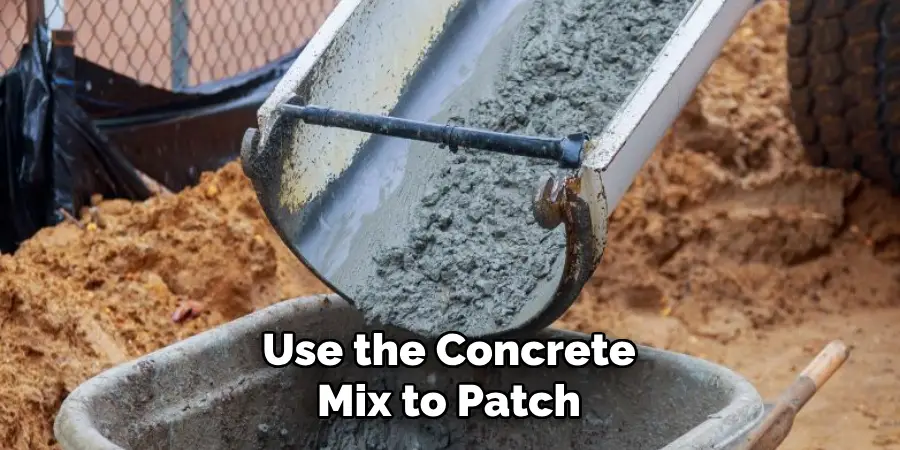
7) Adding Gravel or Crushed Stone
After making any necessary repairs or replacements, it is important to add a layer of gravel or crushed stone to the bottom of the catch basin. This helps with proper drainage and prevents future clogging.
8) Checking for Proper Functionality
Once all repairs have been made and the catch basin insert has been replaced (if needed), it is important to test the functionality of the catch basin. Use a hose or pour water into the basin and observe how it drains. If there are any issues, go back and make the necessary adjustments.
Repairing a catch basin is an important maintenance task that should be considered. By following these steps on how to repair a catch basin and using proper safety precautions, you can effectively repair your catch basin and ensure that it continues to function properly.
Remember to regularly inspect and clean your catch basin to prevent future issues. Overall, proper maintenance of catch basins is crucial for effective stormwater management and preventing potential damage to surrounding infrastructure. So be sure to address any problems with your catch basin as soon as they arise to avoid costly repairs in the future.
12 Steps on How to Repair a Catch Basin
Step 1: Inspect the Catch Basin
Before you start any repair work, it is important to thoroughly inspect the catch basin. Look for signs of damage, such as cracks or breaks in the structure, clogs from debris, or issues with the inlet and outlet pipes. It is also important to take note of the size and shape of the catch basin, as this will determine the type of repairs needed.
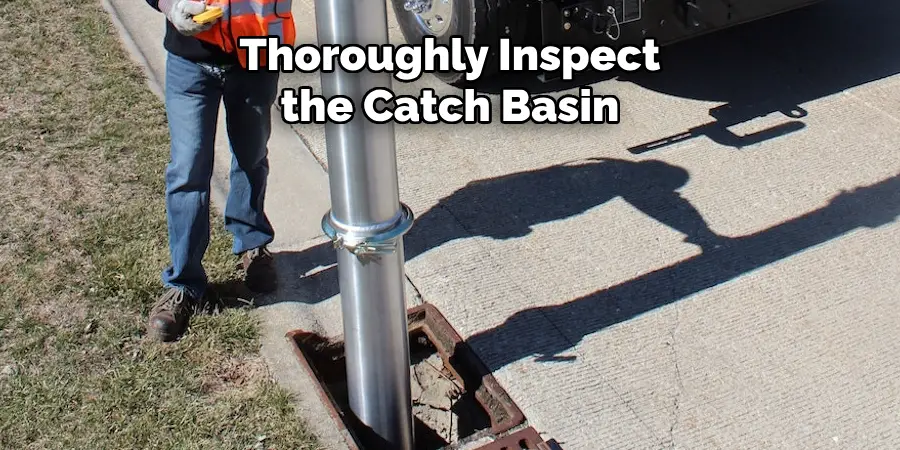
Step 2: Gather Necessary Tools and Materials
Make sure you have all the necessary tools and materials on hand before starting any repair work. This includes safety gear, a shovel or other digging tool, a high-pressure hose or pressure washer, gravel or crushed stone, and any other materials needed for repairs or replacements.
Step 3: Prioritize Safety
Always prioritize safety when working on any project. Wear appropriate gear, such as gloves, goggles, and a face mask, to protect yourself from potential hazards. If working near traffic, make sure to follow all necessary safety protocols.
Step 4: Check for Underground Utilities
Before digging or making any repairs, it is crucial to check for underground utilities such as gas lines, electrical wires, and water pipes. Contact your local utility company to mark any underground lines before beginning work.
Step 5: Remove Debris and Sediment
Using a shovel or other digging tool, remove any debris and sediment from the catch basin. You may also use a high-pressure hose or pressure washer to blast away stubborn build-up. Soaking the catch basin with water beforehand can make this step easier.
Step 6: Repair or Replace Damaged Walls or Grates
If there is damage to the structure walls or grate, use the concrete mix to patch it up. For more severe damage, it may be necessary to replace the catch basin insert with a new one completely. Make sure to secure any replacements properly.
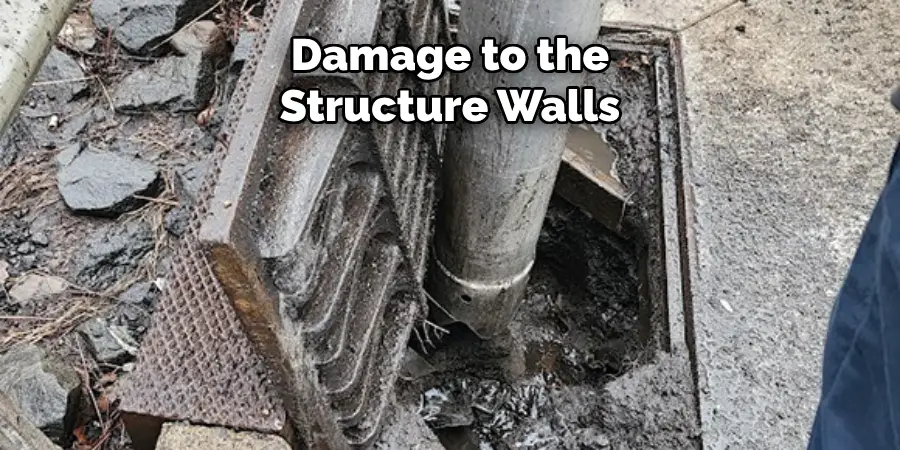
Step 7: Clean and Check Inlet and Outlet Pipes
Inspect the inlet and outlet pipes for any cracks or damage. Use a high-pressure hose or pressure washer to clean out any clogs from debris or sediment. If there are any issues with the pipes, they may need to be replaced.
Step 8: Add Gravel or Crushed Stone
After making any necessary repairs or replacements, add a layer of gravel or crushed stone to the bottom of the catch basin. This helps with proper drainage and prevents future clogging. As an alternative, you can also use a layer of porous concrete to aid in drainage.
Step 9: Check for Proper Functionality
Once all repairs have been made and the catch basin insert has been replaced (if needed), it is important to test the functionality of the catch basin. Use a hose or pour water into the basin and observe how it drains. If there are any issues, go back and make the necessary adjustments.
Step 10: Properly Dispose of Debris
Make sure to properly dispose of any debris or sediment removed from the catch basin. This may involve arranging for a waste management service to collect it or disposing of it yourself at an approved facility.
Step 11: Regular Maintenance
Regularly inspect and clean your catch basin to prevent future issues. This involves removing any debris and sediment, as well as checking for any signs of damage or clogs in the inlet and outlet pipes.
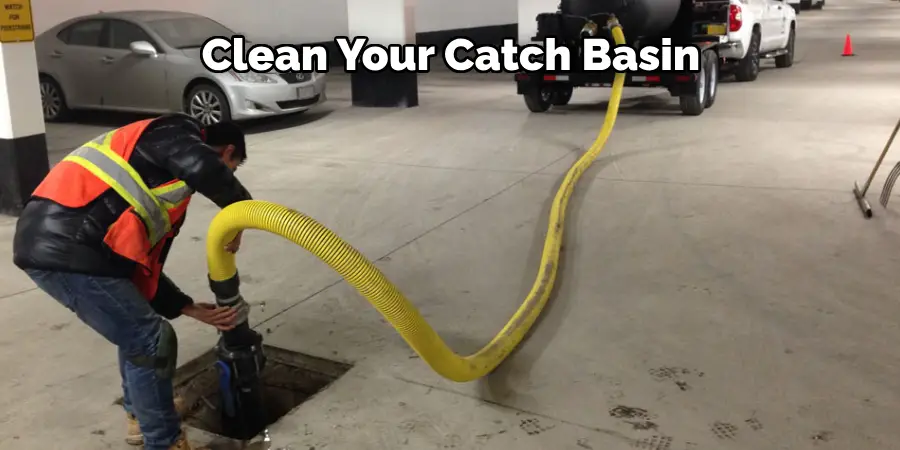
Step 12: Address Issues Immediately
If you notice any problems with your catch basin, address them immediately to avoid costly repairs in the future. Prompt maintenance can help prevent further damage and ensure the proper functioning of the catch basin. By following these 12 steps, you can effectively repair your catch basin and maintain proper stormwater management on your property.
Remember to prioritize safety and seek professional assistance if needed. With regular maintenance and repairs, your catch basin will continue to manage stormwater and prevent potential damage to surrounding infrastructure effectively.
Catch basins play a crucial role in stormwater management and preventing damage to infrastructure. Regular maintenance and prompt repairs are essential for ensuring the proper functionality of catch basins.
By following these steps on how to repair a catch basin, you can effectively repair any issues with your catch basin and maintain effective stormwater management on your property. Remember to prioritize safety and seek professional assistance if needed.
8 Things to Avoid When Repairing a Catch Basin
1) Using Improper Tools or Materials
Using the wrong tools or materials can lead to ineffective repairs and potential safety hazards. Always use appropriate tools and follow manufacturer instructions when making repairs to your catch basin.
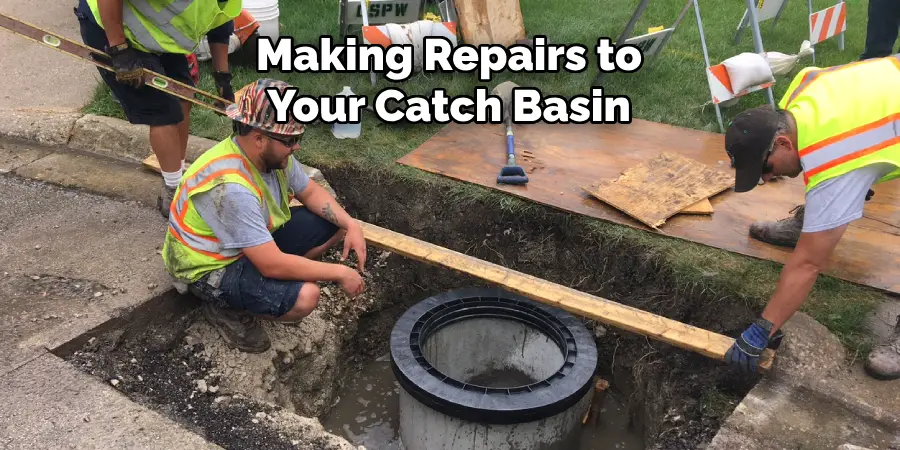
2) Neglecting Safety Precautions
Working with catch basins often involves using heavy equipment, digging, and exposure to hazardous materials. Always prioritize safety by wearing appropriate gear and following all necessary protocols.
3) Ignoring Signs of Damage
Regularly inspect your catch basin for any signs of damage, such as cracks, breaks, or clogs. Ignoring these signs can lead to more costly repairs in the future. If you notice any issues, address them immediately.
4) Not Checking for Underground Utilities
Before digging or making any repairs, always check for underground utilities to avoid potential hazards. Contact your local utility company to mark any lines before beginning work. While it may seem tedious, this step is crucial for ensuring safety.
5) Neglecting Regular Maintenance
Regularly inspect and clean your catch basin to prevent future issues. Neglecting maintenance can lead to clogs, structural damage, and other costly problems. When in doubt, it is best to err on the side of caution and check your catch basin regularly.
6) Improperly Securing Replacements
If you need to replace a damaged catch basin insert, make sure to secure it properly. This will ensure proper functionality and prevent potential hazards such as sinkholes. This step is essential for maintaining the integrity of the catch basin.
7) Disposing of Debris Improperly
Improper disposal of debris removed from the catch basin can have negative impacts on the environment. Make sure to properly dispose of it at an approved facility or arrange for waste management services to collect it.
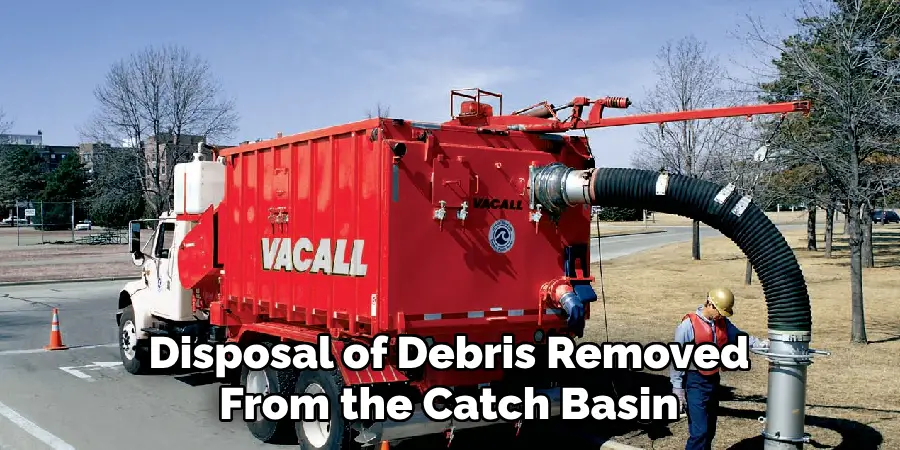
8) Ignoring Signs of Poor Functionality
After making repairs, it is important to test the functionality of your catch basin. If you notice any issues, such as slow drainage or pooling water, address them immediately. Ignoring signs of poor functionality can lead to more costly repairs and potential damage to surrounding infrastructure. By avoiding these common mistakes, you can effectively repair your catch basin and maintain proper stormwater management on your property.
Remember to prioritize safety and seek professional assistance if needed. With regular maintenance and repairs, your catch basin will continue to effectively manage stormwater and prevent potential damage. Overall, proper repair and maintenance of a catch basin is crucial for effective stormwater management on your property.
8 Additional Tips for Maintaining a Catch Basin
1) Keep the Area Around the Catch Basin Clear of Debris
Regularly remove any leaves, branches, or other debris that may accumulate around your catch basin. This will prevent clogs and ensure proper drainage. If the area is heavily wooded, consider installing a grate or screen to catch debris before it reaches the basin.
2) Monitor Nearby Construction
If there is any construction occurring near your property, keep an eye on how it may be affecting your catch basin. Large amounts of sediment and debris from construction sites can clog and damage catch basins if not properly managed.
3) Install a Fence or Barrier
To prevent accidental damage to your catch basin, consider installing a fence or barrier around it. This can also help deter any potential vandals. As always, prioritize safety and make sure the fence or barrier does not impede proper drainage.
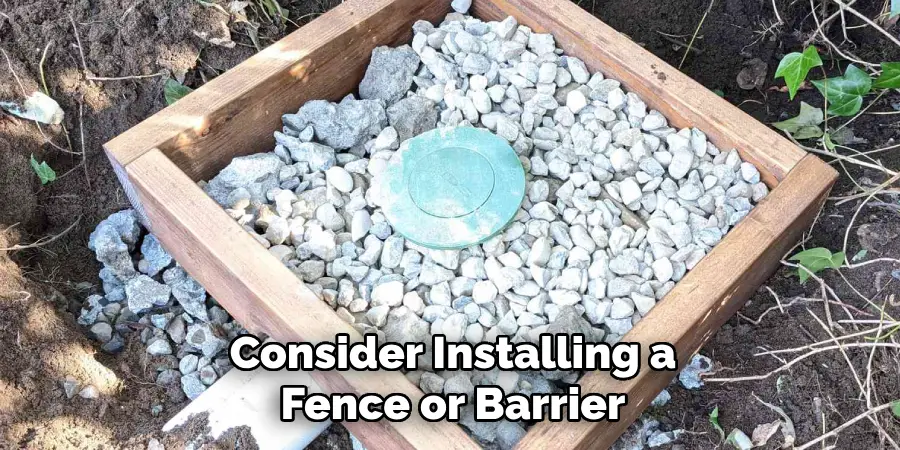
4) Check Inlet and Outlet Pipes Regularly
Inspect the inlet and outlet pipes of your catch basin for any signs of damage or clogs. These are crucial components for effective stormwater management, so it is important to address any issues immediately.
5) Keep Records of Maintenance and Repairs
Maintaining a record of when you last inspected and cleaned your catch basin can help identify any patterns or ongoing issues. This documentation can also be helpful if you encounter any potential insurance claims.
6) Consider Professional Inspection and Cleaning
While regular maintenance can go a long way, it is still important to have your catch basin professionally inspected and cleaned periodically. Professionals have the tools and expertise to thoroughly clean and identify any potential issues that may not be visible to the average person.
7) Educate Others on Proper Catch Basin Maintenance
If you share a property with others, make sure to educate them on proper catch basin maintenance as well. This can help prevent any unintentional damage or neglect of the catch basin.
8) Stay Informed on Local Regulations
Different municipalities may have specific regulations or requirements for catch basin maintenance. Make sure to stay informed and follow any necessary guidelines to maintain compliance. This can help prevent potential fines or penalties. By following these additional tips on how to repair a catch basin, you can further ensure the proper functionality and longevity of your catch basin.
Remember to prioritize safety and seek professional assistance if needed. With proper maintenance and care, your catch basin can effectively manage stormwater and prevent potential damage to your property and surrounding infrastructure. Let’s work together to maintain a functional and efficient stormwater management system for our communities.
Frequently Asked Questions
How Often Should I Inspect and Clean My Catch Basin?
It is recommended to inspect your catch basin at least twice a year or more frequently if you notice any issues. Cleaning should occur whenever signs of debris or clogs are present. Consider professional cleaning once every 2-3 years.
What Should I Do If My Catch Basin Is Damaged?
If you notice any damage to your catch basin, such as cracks or collapses, it is important to address it immediately. Seek professional assistance if needed to repair or replace the damaged components properly.
Can I Repair My Catch Basin on My Own?
While simple maintenance tasks such as removing debris can be done on your own, it is recommended to seek professional assistance for larger repairs or replacements. This will ensure proper functionality and safety.
Are There Any Regulations for Catch Basin Maintenance?
Local regulations may vary, but it is important to stay informed and follow any necessary guidelines for catch basin maintenance in your area. This can help prevent potential fines or penalties. Contact your local municipality for more information.
How Does a Catch Basin Help With Stormwater Management?
Catch basins are designed to collect and filter stormwater, preventing it from causing flooding or erosion in surrounding areas. The basin collects debris and sediment, while the outlet pipe directs clean water into a drainage system. Proper maintenance ensures that the catch basin can effectively carry out its function of stormwater management. So remember to regularly inspect and maintain your catch basin for the benefit of both your property and the environment.
What Happens If I Neglect Maintenance of My Catch Basin?
Neglecting maintenance of your catch basin can lead to clogs, structural damage, and other costly problems. It may also result in fines or penalties if not maintained according to local regulations. It is important to prioritize regular maintenance and repairs to avoid these consequences. So, it’s always better to keep the catch basin clean and in good condition for effective stormwater management.
Conclusion
Maintaining a catch basin may seem like a daunting task, but with proper knowledge and precautions, it can be easily accomplished. By following the tips on how to repair a catch basin and the guidelines provided, you can effectively repair and maintain your catch basin to ensure proper stormwater management on your property.
Remember to prioritize safety and seek professional assistance if needed. With regular maintenance and repairs, your catch basin will continue to function at its best and protect your property from potential damage caused by stormwater.

